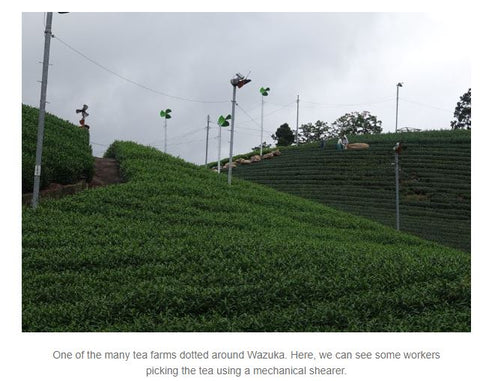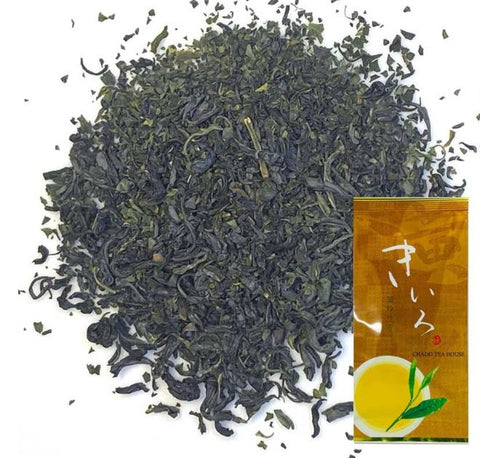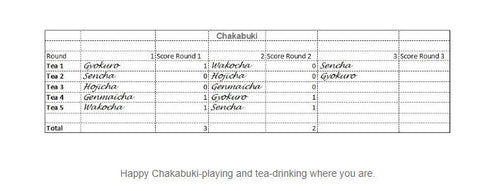
Destination Wazuka - Chado October 2023
I Left My Heart in Wazuka, Kyoto
We are coming to you from Vancouver as usual, but we wish we were still in Wazuka. We have just returned from a wonderful trip to deep in Japanese Tea country – in the town of Wazuka, Kyoto Prefecture, Japan.
When I joined Chado, I began a journey to become knowledgeable in Japanese tea; I thought this would culminate this month with a ‘final’ two-week Japanese Tea Master course in Wazuka. I have just graduated from my course, and I have new knowledge, new appreciation and the realization that far from my education being complete there are many things still to learn about Japanese Green Tea.
Now that I have my qualifications, I am confident that Japanese tea is a very complex subject. Every day, there is something new to discover, some quirk from the norm to enjoy and learn. We hope in future articles, we can share with you some of the things we learned about tea and its cultural place in Japanese life.
I got to participate in many aspects of tea – from picking the leaves, steaming the tea by hand over a live flame in a steamer or pan-firing the leaves in a large wok-like pan, rolling and drying the tea to brewing and drinking. Every step in the process of making tea affects the final product, and every step has multiple variations.
Japanese tea is rooted in tradition, but that does not mean it is not being constantly re-invigorated by variations in all aspects of its production. From the cultivars being developed – we visited the Kyoto Tea Research Institute to see the work being done to improve yields and quality of existing cultivars and investigate new variants that can thrive in warmer temperatures. We examined the way tea is grown, how and when it is picked, and the processing steps at the tea factory where each and every step is being investigated to ensure that the tea we love is delivered in peak condition with that taste and aroma we enjoy, and on the other to see what new delights can be produced by thinking outside the box with how we deal with the fruits of this fabulous plant.
Wazuka is a small place with likely more tea lovers per square mile than just about anywhere else. It is a magnificent place to visit, and our trip was well timed to be at the end of the Summer and the beginning of Fall, so we had bright, sunny days without the heat of earlier months or the rain of later ones. We got to meet and chat about tea with many a tea-lover, one of whom was a Chado Tea House customer right on the farm where I was working – that was the icing on the cake of a great couple of weeks - Hi Wade, we hope you made it home safe and had a memorable time in Wazuka.
A Complex Sencha
This tea is a good example of some of the variations in tea that exist across the range of classic Japanese teas. We have mentioned this tea before, but based on its unique set of variations from the classical sencha theme, we thought it would be a good tea to try to put a finger on all the variations happening with tea in Japan at this time.
Sencha Aratsukuri is a blended tea from two cultivars. The main cultivar is Yamanoibuki, which is known for its sweetness. The second is the popular Yabukita cultivar. This tea is grown using a technique called Bud-weight cultivation.
The Bud-Weight method involves not cutting the plants back more than necessary; this leads to fewer branches, but the remaining branches are thicker, with fewer buds, though those buds are larger. The yield of the plants is smaller, but the tea leaves are full of nutrients and have a rich Umami flavor.
This tea is classed as a kabuse tea, which means it is shaded for a short time prior to harvest; this short-time covering process is not common in Shizuoka, however, this Aratsukuri tea uses the Kabuse method that results in the sweetness of Umami.
Typical Sencha removes stems or buds during the final stage; however, this tea is unsorted which includes all parts.
This is an excellent example of combining techniques to produce truly premium, tasty Sencha.
Pan-FIring to Stop Oxidation
Kamairi Pan-fried Sencha Kiiro
Most Japanese tea is steamed to stop oxidation, so why did we pan-fire the tea in a wok on one occasion during my recent course?
We did that to make some tea called Kamairicha –a Japanese tea that uses the pan-firing process to stop oxidation.
Why did we take some of that tea and pan-fire it again in a much hotter wok than the one we used to stop the oxidation?
That was to create a Hojicha version of the Kamairicha, and we technically did not pan-fire the tea. We technically roasted it.
If truth be told, the Kamairicha we made was pretty bad; we burned the tea in the roasting stage, which was literally 'tough to swallow'.
Much better is a Kamairicha we carry, made by a producer who knows what they are doing - please give Kamairicha a try if you are looking for a quality green tea that uses pan-firing rather than steaming to stop the oxidation process.
The pan-frying process makes the tea very aromatic and palate-cleansing. Yellowy liquor Kamairi Sencha is good to drink alone or as a nice accompaniment to meals.
Another unique feature of this particular pan-fried tea is that this tea is organically grown. No pesticides or chemical fertilizers are used for this tea. Tea leaves are grown on an organic farm on the mountainside of TenRyu region in Shizuoka.
Chakabuki
Chakabuki has its roots in ancient blind tea-tasting competitions. It is still practiced today and is mainly used to evaluate the skills of tea professionals.
During the Edo Period (1603-1868) various forms of competitive tea-tasting competitions became popular, and gambling was often involved and encouraged. It is said that these competitions helped increase the popularity of tea amongst the general public and moved it from what was the realm of monks and privileged and wealthy in Japan.
When The Edo Period ended and The Meiji Era (1868-1912) began, the Chakabuki events were frowned upon, and popularity decreased. We can see a lot in Japanese history where a new dynasty decides that what was good in one dynasty is frowned upon in the next – some huge aspects of Japanese life and culture changed between the Edo and Meiji periods – for example, the Samurai class was effectively banned in Meiji after being the ruling class system of Edo, as was Japan isolationism.
Chakabuki is a game that you can enjoy yourself and makes a change from the likes of Trivial Pursuits, charades or whatever games are currently the ‘go-to’ for an evening with friends.
Historically, one needs five types of similar tea, but a good game can be had with just two or three. Let us suppose we have Sencha, Genmaicha and Hojicha available and you want to keep the game on the easier side.
Each player is given a scorecard, and in each round, the players are presented with a tea to taste – let's say in round 1 we serve Hojicha first. The player has to write down what they think the tea is; we next might serve Sencha; once again, the player writes down what they believe that tea is. Finally, we would serve genmaicha; the final guess is made and recorded. At the end of the round, the teas are announced in order, and the players score their guesses.
Subsequent rounds can proceed until the player’s palates are no longer working or because someone becomes the obvious winner. It is important that when a player guesses a tea during tasting, they cannot change their guess after tasting subsequent teas. To make it harder, especially if the number of available teas is small, the quizmaster can pretend they have 4 or 5 teas even when they only have three and the players' life becomes harder guessing from a list of teas some of which are not even present.
We have played this game at Chado Tea House, and it is better than it sounds; given my poor explanation, a trip to the dentist sounds more fun than what I have described, but please give it a try and let us know how it goes.





